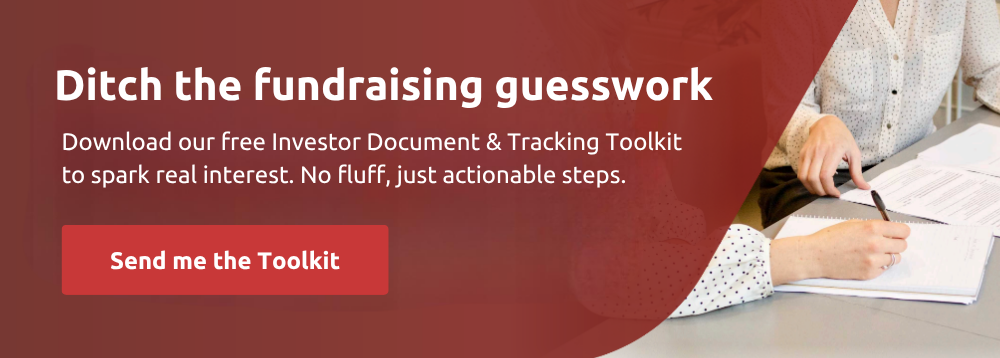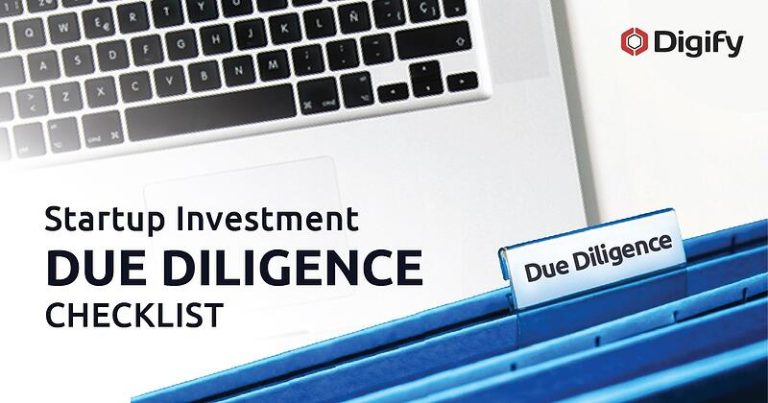Digify note: This guest article has been written by our friend David Zhou, who is well connected in the IR and VC world. He also shares his musings on his personal blog. Here, he offers a candid guide to investor relations, sharing unconventional yet deeply practical strategies for building lasting relationships with LPs beyond fundraising cycles.
Author’s note: My promise to you is that we’ll share advice you’ve likely never heard before. If you’re intimidated by the time you get to the end of this article, then we’ll have done our job. Because that’s what it takes to fight in the same arena as people I’ve personally admired over the years. That said, this won’t be comprehensive, but a compilation of N of 1 practices that hopefully serve as tools in your toolkit. This article is part 2 of a 2-part series. In part 1, I shared the overarching frameworks that govern how I think about managing relationships. This second one focuses on tactical elements governed by these frameworks.
It’s easy to stay high-level and strategic. I won’t. I personally find it helpful to have tactical examples about how to execute frameworks for LP relationship management. As your mileage may vary, the below will hopefully serve as tools for the toolkit, as opposed to Commandments or the Constitution for investor relations practices.
Tactic 1: Co-create
In general, people who help create a product have more mental and emotional buy-in to the continued success of said product. It’s why influencers leverage their fanbase to generate new ideas for content. It’s why laws and propositions are voted on. It’s why your parents asked what you wanted for dinner. It’s why, if you’re a junior team member and want budget and resources for your project, you ask for feedback from leadership (often). While not every LP wants to be intimately involved in the day-to-day, and even if they don’t end up helping, it still goes a long way when you ask for their feedback and advice for major firm decisions, regardless of whether they’re on the LPAC or not. Building a strong LP relationship requires making them feel like true partners in the decision-making process. They want to be involved in:
- Hiring/promoting a new partner or GP
- Pivoting or expanding fund strategy
- Increasing the length of the deployment period or fund term
- Generating early DPI
- Breaking a partnership
LPs want to hear news before they become news. And if time and expertise allows, they’d like to write the press release with you.
In addition, if you have the bandwidth and resources, host events with them on topic areas they’re interested in. Even if it’s a small gathering of four to six people, it’s the intentionality and the willingness that counts.
Tactic 2: Follow Up Without Asks, Often and Thoughtfully
I think a lot about Ebbinghaus’ Forgetting Curve. Effectively, how long does it take someone to forget new information and as a function, how often do you need to remind someone for them to retain memory of that new piece of information? Within an hour, the average person forgets half of what they learned. Within 24 hours, the average person forgets 70% of it. And within a week, they forget 90%. I won’t get too technical here, but if you are interested in learning more, I highly recommend reading this paper: Murre and Dros’ Replication and Analysis of Ebbinghaus’ Forgetting Curve.
And so, in theory, every time someone’s memory of you, of your thesis, or of your firm drops below 90% memory retention, you should remind them. Rough intervals of which are within minutes, within 2 hours, within a day, within a week, within 30 days, and so on. In practice, after you catch up with an LP, text them a note saying that you’ll follow up within the day. And yes, texts are often far more effective in maintaining relationships with LPs than emails. Emails are read by other team members and often lost in inboxes. The only exception to this rule is if you or your LP is an RIA, and requires all communication to be archived, including text.
Outside of scheduled catchups, spend a lot of time tracking people’s hobbies and interests in your CRM, and sending LPs an article, video, interview or insight that reminded you of them or that you think they’d genuinely appreciate; it goes a long way. Oh, and sending thank you notes more often than you think you need to, especially unprompted ones, really helps cement relationships. Over time, this will become a habit. Here’s an example of an email I send often:

Two things here:
- You do not have to write like me.
- Telling people that they don’t have to reply is more likely to result in a reply. Works for me 80-90% of the time when sending to a warm connection. Though, your mileage may vary.
When I had Felipe Valencia from Veronorte on my podcast, he mentioned that he brought Colombian coffee for GPs whenever he visited the States. I also know of IR people and GPs who do the same for LPs. And vice versa from LPs to Heads of IR and GPs, especially from our Asian counterparts, where gifting culture is more common. Do note though that if your LP is from a public institution—sovereign wealth fund, pension, endowment, or sometimes, even a large corporation—individuals are not allowed to accept gifts more than $50, or sometimes none at all.
Tactic 3: Prepare to Meet Ahead of Budget Cycles
One of my favorite lessons from Top Tier Capital’s co-founder, David York, was on when to see LPs as a function of budgetary cycles.
“Going to see accounts before budgets are set helps get your brand and your story in the mind of the budget setter. In the case of the US, budgets are set in January and July, depending on the fiscal year. In the case of Japan, budgets are set at the end of March, early April. To get into the budget for Tokyo, you gotta be working with the client in the fall to get them ready to do it for the next fiscal year. [For] Korea, the budgets are set in January, but they don’t really get executed until the first of April. So there’s time in there where you can work on those things. The same thing is true with Europe. A lot of budgets are mid-year. So you develop some understanding of patterns. You need to give yourself, for better or worse if you’re raising money, two to three years of relationship-building with clients.”
Knowing the timing of when to see who is important, especially these days when you’re required to meet and build relationships across the world. Strategic timing can make or break an LP relationship, particularly when it comes to securing allocations.
While the above are usually for pensions, corporates and sovereign wealth funds, endowments, foundations, and large family offices all have recurring cycles. And meeting a few months before the ball has to roll can mean the difference between you being a line item somewhere and being on top of the docket.
Tactic 4: The 11-star Experiences
I first learned of this when tuning into a Reid Hoffman and Brian Chesky interview, which I highly recommend. It was further reinforced as I spent more time learning from people in the hospitality and culinary world.
To summarize, everyone knows what a 1- to 5-star experience looks and feels like. But when everyone is optimizing on a 5-point scale, to outcompete others, you must compete on a scale they have yet to conceptualize. And so a five out of five experience is one where you leave happy and content enough to leave a glowing review because all the boxes were checked. Everything in your ideal vacation, retreat, or dining experience was fulfilled. So… if that’s the new baseline, then what does a six out of five experience look like?
Maybe that’s sending a limo to pick someone up at the airport, so they don’t have to find their own way to the establishment. That could also be finding your guest’s favorite bottle of champagne and having it ready when they enter your premises.
So, if that’s a six out of five, what does a seven out of five look like? You’ve pre-booked everything your guest is interested in before they show up and without them having to lift a finger. Or you learned that on their entire NY trip, your diners never had the chance to try an original New York hot dog from a street vendor, so you replace one course of the menu just so that they can try it. (True story. Would highly recommend reading Will Guidara’s Unreasonable Hospitality.)
So, if that’s a seven-star experience, what does an eight look like? What about a nine-star? 10-star? 11-star?
At some point, the stakes get quite insane. Meeting their role model from the history books. Using time travel or teleportation devices. Meeting aliens. But trust me, if competitive sports taught me anything, it’s that it’s good to envision the impossible as possible. And, the most important part to envision in this entire exercise is the genuine, and unstoppable smile that appears.
So what does this look like in practice? I cannot list everything out there, because it’s 1. not possible, and 2. if I can spell out a true 7- or 8-star experience, it’s generalizable. And if it is, it won’t feel special. That said, let me list out some I’ve done in the past that hopefully serve as inspiration. Caveat, I’m a Bay Area native, and I still live in the Bay Area.
- An LP tells me they’re coming to visit the Bay. I send them a suggested itinerary based on the number of days they’re here, which balances both work and some under-the-radar touristy things. On top of that, I send hotels I suggest, restaurants I recommend, and more. All of which I offer to call on their behalf because I know the staff there and I might be able to get them a discounted rate or an automatic upgrade.
- If I recommend a restaurant, and they agree to host a meeting there or just to try it out, I call the restaurant, tell them that they’re really important people to me (can do so if I’m a regular patron there already), and on top of that, I ask them to give the guests a kitchen tour.
- I ask a local chocolatier to custom make some bonbons for me that are inspired by the individuals visiting, that I give to the LPs when I meet them in person.
- If it’s a rush order, I call one of the long-established fortune cookie shops in San Francisco for them to do a custom order and write custom fortunes inside each fortune cookie. And inside each fortune is a fun fact about each person I’ve introduced them to meet while they’re here.
- When it comes to intros, 70% of my intros will be relevant to their business interests. Startups. VCs. Other LPs. 20% of my intros are my recommendation of who they should meet but might not know they should. 10% are 1-2 people I think extremely highly of who are outside of technology and startups, but will offer a fascinating perspective to the world. A YouTuber with millions of subscribers. A legendary restaurateur. A lead game designer. An author. A Nobel prize winning professor. Naturally, I do the last selectively. My job is also to protect their bandwidth. For the last set of intros, I also don’t take intro requests.
All-in-all, LPs, like the rest of us, are human. We’re emotional creatures. We love stories. We are naturally curious. We love wonder. Their job doesn’t always allow for them to be, especially with tons of back-to-back diligence meetings, conversations with stakeholders, and so on. So it makes me personally really happy when I can balance suspense and surprise when I help them craft trips to the Bay.
These are just a few strategies and tactics among many. The goal with this and the previous pieces was never to be exhaustive, but to inspire possibilities and your favorite practices. And if you’re willing, I, as well as the Digify team, are always all ears about practices you’ve come to appreciate and build into your own routine. Until the next time, keep staying awesome!








